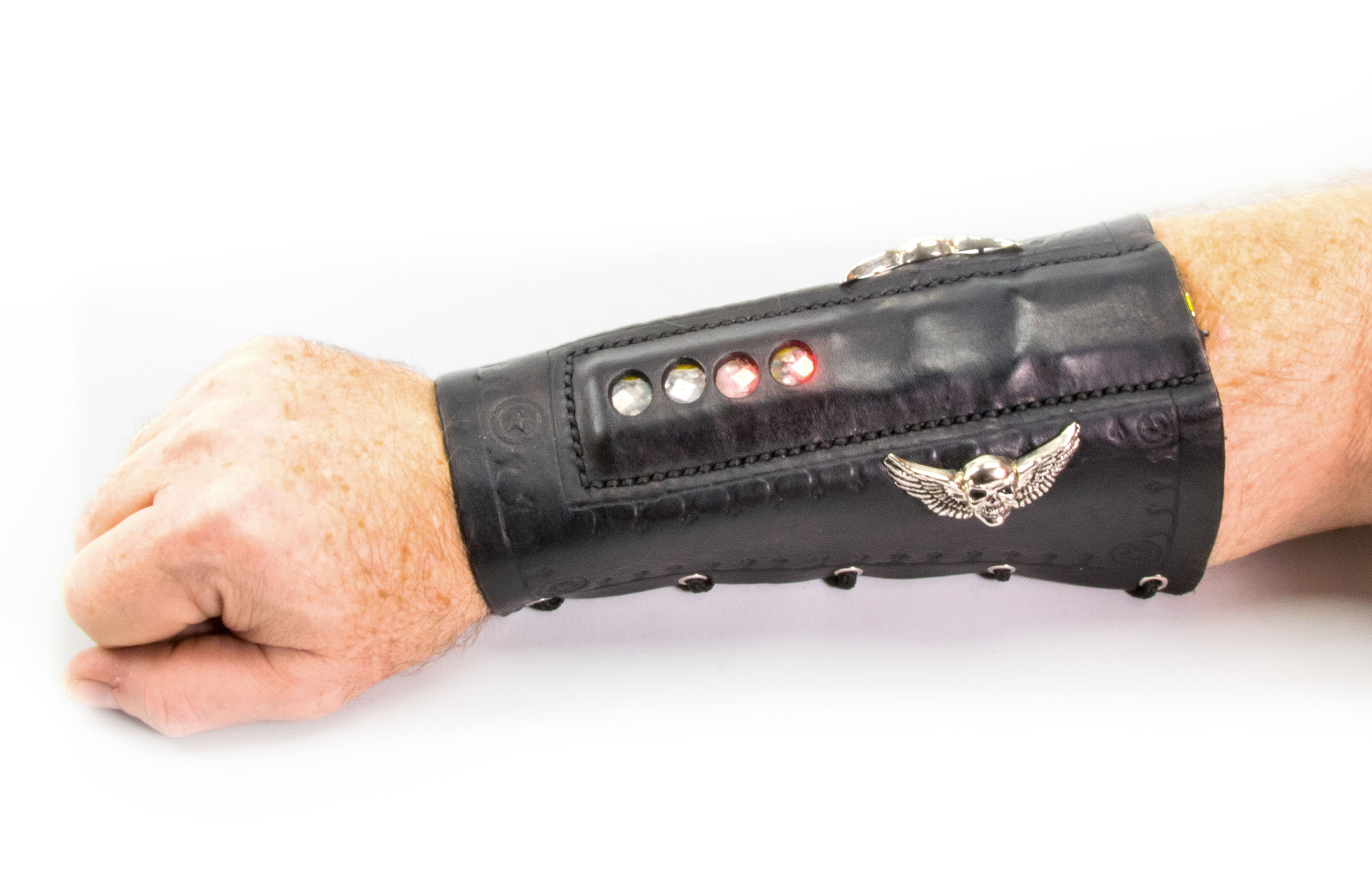
Wearable microcontrollers have found their way into cosplay, fashion, and daily wear but are usually textile based. In this Skill Builder we’ll explore techniques for including leather in your wearables by examining my forearm bracer project, which uses a built-in Adafruit Gemma and RGB NeoPixels that change color patterns with a simple capacitive touch of the medallion on its side. Read along and learn some key tips to working with leather and electronics, both on their own, and combined into one project.
Leather is a favorite material of crafters, cosplayers, and makers for good reasons. It is moldable, cuttable, colorable, and durable. It can be riveted, stitched, glued, and laced. As a substrate for a wearable project it has some very desirable qualities and a few gotchas. The particulars will vary with different efforts, but the general themes are relevant across most projects.


















